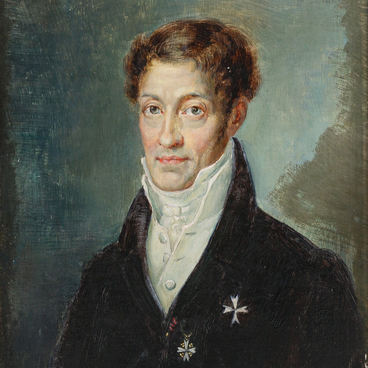This portrait of Alexander Herzen was created by Alexander Lavrentievich Vitberg, an artist and architect of Swedish origin. He drew this portrait between September 29 and October 7, 1836, for the birthday of Natalya Zakharina, the writer’s wife. Alexander Herzen wrote to his wife, “The resemblance is uncanny; my portrait reflects everything — my soul, my personality, and my love. Only Vitberg can do that. And he drew this portrait just for you.”
Alexander Vitberg is better known as the architect who created the first design of the Cathedral of Christ the Savior on Sparrow Hills. In 1814, an open competition was announced to design a church in Moscow. The idea of this church was conceived by Alexander I in 1812. The emperor chose the design by an unknown young architect. According to him, Vitberg “spoke in stones.” Based on the architect’s plan, the church was supposed to rise above Moscow, as if floating over the city. However, the construction was delayed, and after the death of Alexander I, Vitberg was accused of wasteful spending and exiled to Vyatka. The treasurer of the construction committee Berg said that Vitberg “became a scapegoat, as being a man of exceptional integrity, he would certainly never try to steal a kopeck from the budget (or anywhere else).”
During the same time, Alexander Herzen also lived in Vyatka as a political exile. The writer and the architect became close friends. Later, Herzen recalled, “Among the grotesque and greasy, petty and loathsome people and scenes, files and titles, in this setting of official routine and red-tape, I recall the noble and melancholy features of an artist, who was crushed by the government with cold and callous cruelty.”
In Vyatka, Alexander Vitberg was not allowed to work in civil service. All his property was confiscated based on a court ruling. Until the second half of March 1836 when his family came from St. Petersburg, the architect lived in the house of Leushina on Moskovskaya Street. Alexander Herzen supported his friend’s large family in need.
In Vyatka, the architect designed the Alexander
Nevsky Cathedral, the gates and front fence of the Alexander Garden. In 1840,
upon a petition of Vasily Zhukovsky, Alexander Vitberg was allowed to return to
St. Petersburg.




